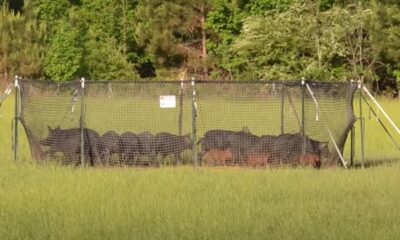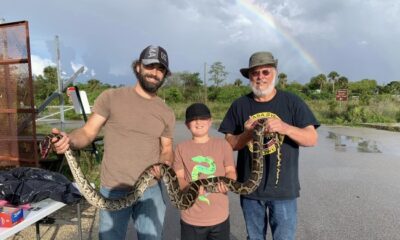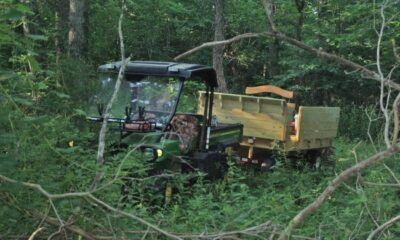Adventure
Conservation: War of the Invasives

America’s native flora and fauna are fighting a war … against invasive species. Most people focus on invasive animals, but invasive plants in pastures, hay fields and crop fields are a growing concern. The COVID slow down created inaction in controlling invasives. Now the very high cost of chemicals has allowed the invasives to expand and in some cases take over fields and pastures. “If you have not been out fighting invasives in the fields, pastures and rights- of-way, you are probably behind the power curve for private landowners” states Nick Prough, Chief Biologist with the Quail and Upland Wildlife Federation (QUWF).
“Since the middle of this summer, we have spent long days in unreal temperatures with very high tick populations, advising and assisting private landowners with their ongoing battles with Johnsongrass, Teasel, Thistle and Serecia Lespedeza which private landowners do not want in their native warm season grasses or crops. Johnsongrass can be fatal to grazing cattle and must be controlled. Along with these troublemakers are many tree species invading the same much needed pastures and crop fields such as Locust, Bradford Pear and Sumac. They are overwhelming many fields and pastures” Prough explains. “These invasives have to be sprayed to remove them” Prough states. “We have been working closely with the Missouri Department of Transportation (MODOT), local and regional staff, who are in charge of spraying roadsides and highway rights of way, in partnership with the Missouri Department of Conservation (MDC). “If we attack the invasives from both sides of the fence we can finally begin to gain some traction on these invasive pests,” Prough concludes. Read more about the war with invasives and Nicks never ending work with and for landowners with the MDC partnership in future QUWF “Habitat Guide” issues posted on www.QUWF.net.
Another factor compounding the controlling of invasives is the Another factor compounding the controlling of invasives is the extreme heat with very high temperatures. “Experience has shown, it is not recommended to apply any chemical at or above 95 degrees Fahrenheit as it produces negative effects due to the stress on the various plants” Prough indicates. Ambient temperatures in the Midwest and other locations have been well above 100 degrees for weeks at a time. With any controlled application the rule is “Read the label, Read the label, and yes, Read the Label”.
-

 Accessories2 months ago
Accessories2 months agoBackcountry Trails 2025: Top 10 Hacks & Gear
-

 Adventure2 months ago
Adventure2 months agoE-Bike Trails During Fall 2025 in the US | Autumn Routes 🚲🍁
-

 Hunting17 hours ago
Hunting17 hours agoHow to Score Deer Antlers: Boone & Crockett Guide
-

 Accessories1 month ago
Accessories1 month agoKilian Jornet States of Elevation Midway Update
-

 Uncategorized4 weeks ago
Uncategorized4 weeks agoBest Corn Mazes 2025: Top 10 in the US for Fall Fun






